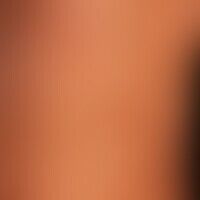Neurofibromatosis (overview) Images
Go to article Neurofibromatosis (overview)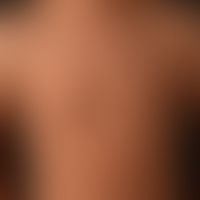
type i neurofibromatosis, peripheral type or classic cutaneous form. numerous smaller and larger soft papules and aques. several café-au-lait spots.


type I neurofibromatosis, peripheral type or classic cutaneous form. numerous smaller and larger soft papules and nodules. no so-called café-au-lait spots. left brood region of little conspicuous nevus anämicus (see subsequent figure). several capillary angiomas.
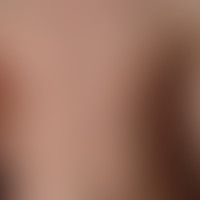
Neurofibromatosis peripheral: Multiple dermal and large subcutaneous neurofibromas. Large café au lait spot (lower part of the picture). Multiple spatter-like pigment spots.
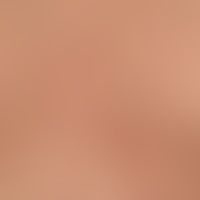
type I neurofibromatosis, peripheral type or classic cutaneous form. detailed view. numerous smaller and larger soft papules and nodules. nevus anemicus marked by arrows. 2 smaller capillary angiomas.
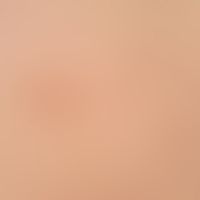
Type I neurofibromatosis, peripheral type or classic cutaneous form. Detail view. Several café-au-lait stains.
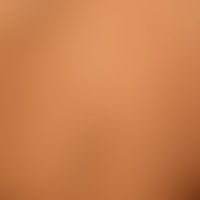
type i neurofibromatosis, peripheral type or classic cutaneous form. numerous deep-seated soft papules and nodules. multiple smaller and larger café-au-lait spots.
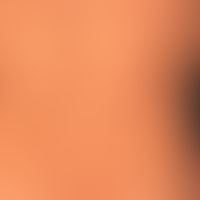
type I neurofibromatosis, peripheral type or classic cutaneous form. numerous smaller and larger soft papules and nodules. several so-called café-au-lait spots.
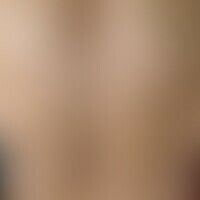
type i neurofibromatosis, peripheral type or classic cutaneous form. since puberty slowly increasing formation of these soft, skin-coloured or slightly brownish, painless papules and nodules. characteristic for neurofibromas are consistency and the bell-button phenomenon (the papules can be pressed into the skin under pressure). on the flanks on both sides large café-au-lait spots up to 8 cm in diameter. the simultaneous detection of several café-au-lait spots secured the clinical diagnosis here.
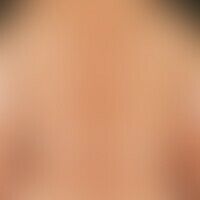
Type I Neurofibromatosis, peripheral type or classic cutaneous form Peripheral neurofibromatosis with multiple skin-coloured to light brown, soft nodes and nodules, sometimes also stalked, bulging soft, skin-coloured dewlap on the left hip.
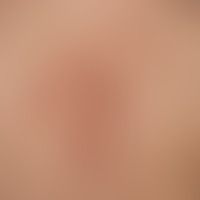
type i neurofibromatosis, peripheral type or classic cutaneous form. numerous smaller and larger soft, predominantly pigmented, practical nodules and nodules. in the larger nodules the so-called "bell-button phenomenon" can be detected. the palpating finger penetrates the deep dermis as if through a fascial gap. few café-au-lait spots. papules and nodules. only isolated rather discreet café-au-lait spots.
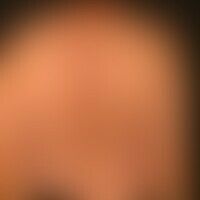
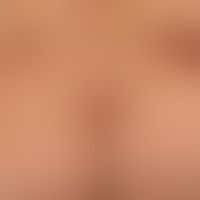
Type I Neurofibromatosis, peripheral type or classic cutaneous form. Since puberty slowly increasing formation of these soft, skin-coloured or slightly brownish, painless papules and nodules. Several café-au-lait spots.
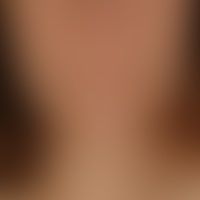
Type I Neurofibromatosis, peripheral type or classic cutaneous form, numerous smaller and larger soft papules and nodules.
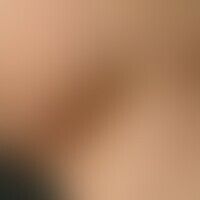
type I neurofibromatosis, peripheral type or classic cutaneous form. since puberty slowly increasing, soft, 0.2-0.8 cm large, skin-coloured or slightly brownish, painless, flat or hemispherical papules and nodules in a 42-year-old patient. the bell-button phenomenon can be triggered (the papules can be pressed into the skin under pressure). café-au-lait spots up to 7 cm in diameter also appear on the trunk.
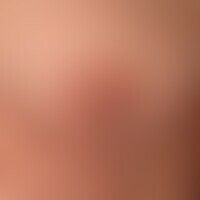
Type I neurofibromatosis, peripheral type or classic cutaneous form. massive tumorous transformation of the skin with numerous generalized distributed, soft, skin-colored, partly pointed conical shaped neurofibromas on the left mamma. the CT examination (skull) did not reveal any pathological findings. no neurofibromas known in the family.
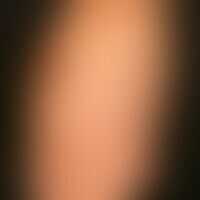
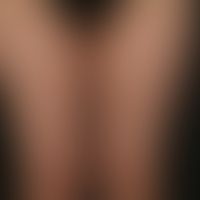
Type I Neurofibromatosis, peripheral type or classic cutaneous form.
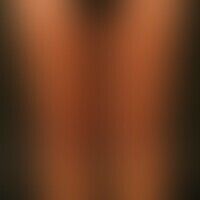
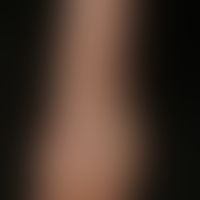
Type I Neurofibromatosis, peripheral type or classic cutaneous form, numerous soft cutaneous and subcutaneous nodules.

Type I Neurofibromatosis, peripheral type or classic cutaneous form. Permanent, multiple, skin-coloured, calotte-like bulging, soft, smooth papules and nodules in the area of the back of the hand and the sides of the fingers. Positive bell-button phenomenon: subcutaneous tumours protruding like hernia through the skin can be pushed back with one finger.

Classical (type I) neurofibromatosis: circumscribed dewlap formation.

Neurofibromatosis periphere: Lisch nodules - sptizer-like brown spots in the iris

Central-peripheral neurofibromatosis (palmo-plantar neurofibromatosis or type III neurofibromatosis) Chronic inpatient palmo-plantar neurofibromatosis, progressive in childhood; now no longer progressive, soft, skin-colored, painless palmo-plantar nodules and plaques.

Neurofibromatosis segmental, type V Neurofibromatosis. Unilaterally distributed café au lait stains.


Neurofibromatosis: Electron microscopy: Mark-containing (M) nerve (N) in Schwann cell (S).

Neurofibromatosis: Electron microscopy: Incision of a non-marrow nerve (N) in a Schwann cell (S) in a neurofibroma.
